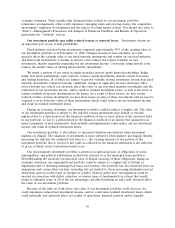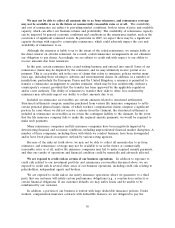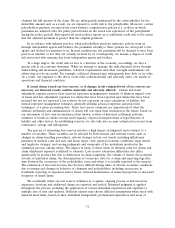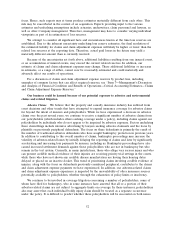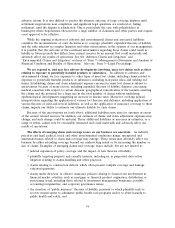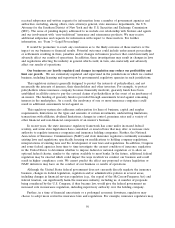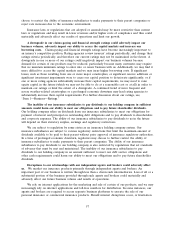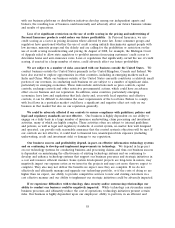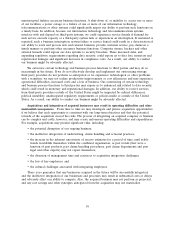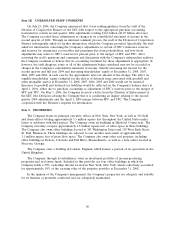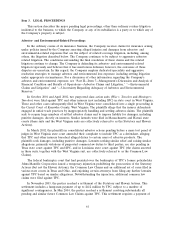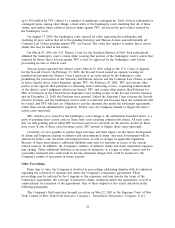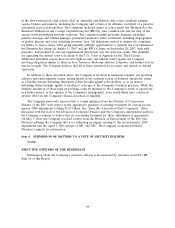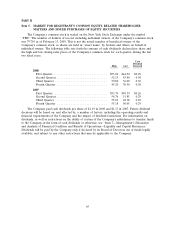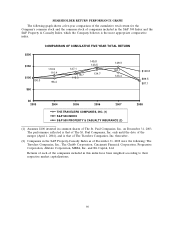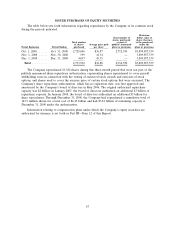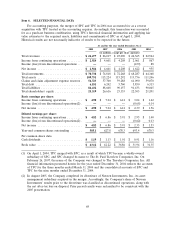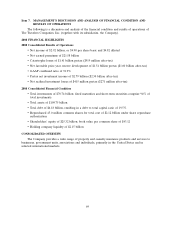Travelers 2008 Annual Report Download - page 71
Download and view the complete annual report
Please find page 71 of the 2008 Travelers annual report below. You can navigate through the pages in the report by either clicking on the pages listed below, or by using the keyword search tool below to find specific information within the annual report.uninterrupted fashion, necessary business functions. A shut-down of, or inability to, access one or more
of our facilities, a power outage or a failure of one or more of our information technology,
telecommunications or other systems could significantly impair our ability to perform such functions on
a timely basis. In addition, because our information technology and telecommunications systems
interface with and depend on third-party systems, we could experience service denials if demand for
such service exceeds capacity or a third-party system fails or experiences an interruption. If sustained or
repeated, such a business interruption, system failure or service denial could result in a deterioration of
our ability to write and process new and renewal business, provide customer service, pay claims in a
timely manner or perform other necessary business functions. Computer viruses, hackers and other
external hazards could expose our data systems to security breaches. These increased risks, and
expanding regulatory requirements regarding data security, could expose us to data loss, monetary and
reputational damages and significant increases in compliance costs. As a result, our ability to conduct
our business might be adversely affected.
We outsource certain technology and business process functions to third parties and may do so
increasingly in the future. If we do not effectively develop and implement our outsourcing strategy,
third party providers do not perform as anticipated or we experience technological or other problems
with a transition, we may not realize productivity improvements or cost efficiencies and may experience
operational difficulties, increased costs and a loss of business. Our outsourcing of certain technology
and business process functions to third parties may expose us to enhanced risk related to data security,
which could result in monetary and reputational damages. In addition, our ability to receive services
from third party providers outside of the United States might be impacted by cultural differences,
political instability, unanticipated regulatory requirements or policies inside or outside of the United
States. As a result, our ability to conduct our business might be adversely affected.
Acquisitions and integration of acquired businesses may result in operating difficulties and other
unintended consequences. From time to time we may investigate and pursue acquisition opportunities
if we believe that such opportunity is consistent with our long-term objectives and that the potential
rewards of the acquisition exceed the risks. The process of integrating an acquired company or business
can be complex and costly, however, and may create unforeseen operating difficulties and expenditures.
For example, acquisitions may present significant risks, including:
• the potential disruption of our ongoing business;
• the ineffective integration of underwriting, claims handling and actuarial practices;
• the increase in the inherent uncertainty of reserve estimates for a period of time, until stable
trends reestablish themselves within the combined organization, as past trends (that were a
function of past products, past claims handling procedures, past claims departments and past
legal and other experts) may not repeat themselves;
• the diversion of management time and resources to acquisition integration challenges;
• the loss of key employees; and
• the cultural challenges associated with integrating employees.
There is no guarantee that any businesses acquired in the future will be successfully integrated,
and the ineffective integration of our businesses and processes may result in substantial costs or delays
and adversely affect our ability to compete. Also, the acquired business may not perform as projected,
and any cost savings and other synergies anticipated from the acquisition may not materialize.
59


